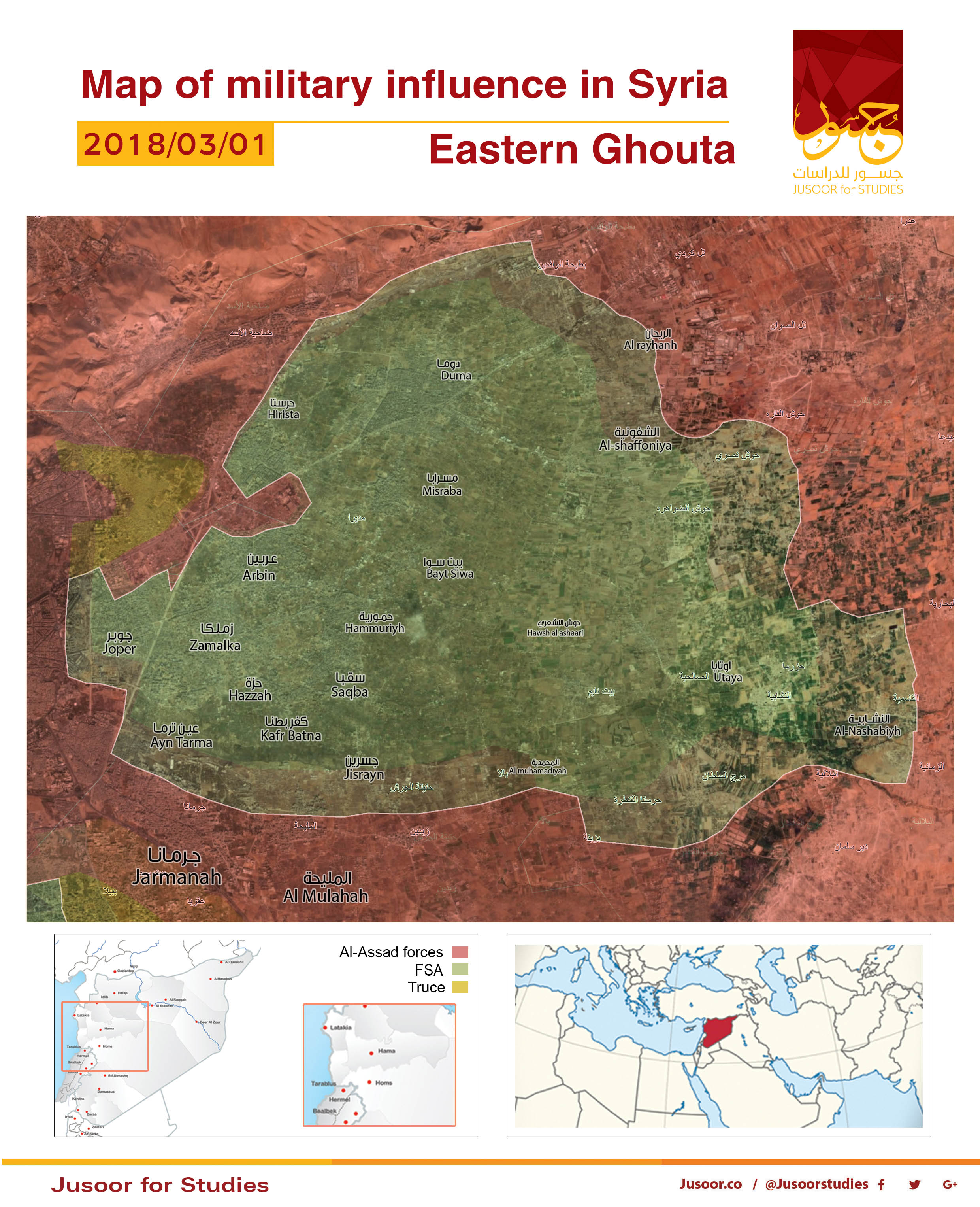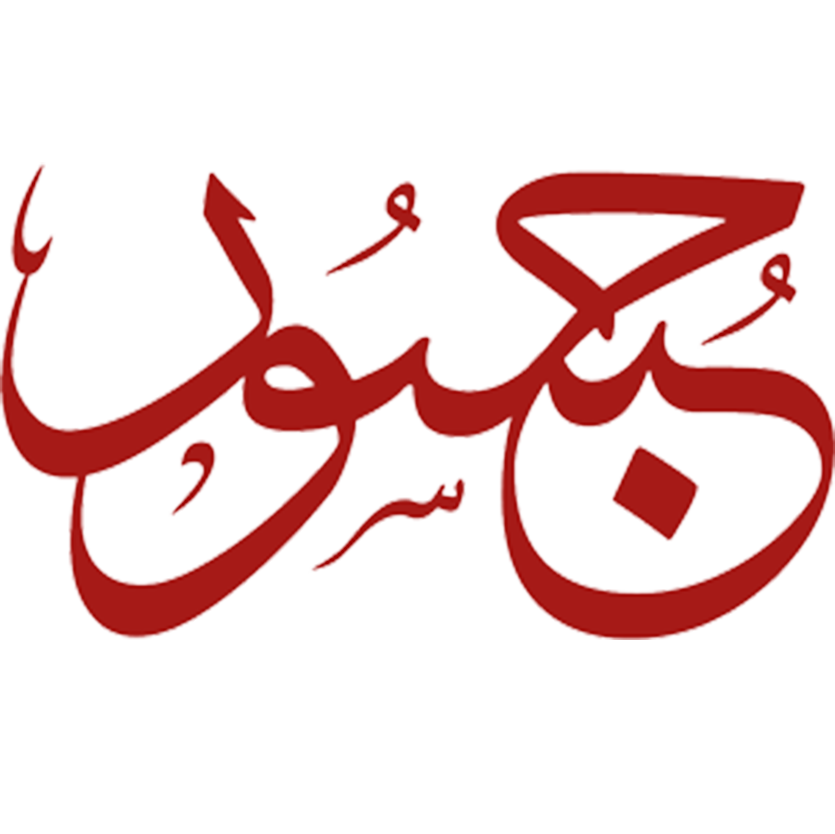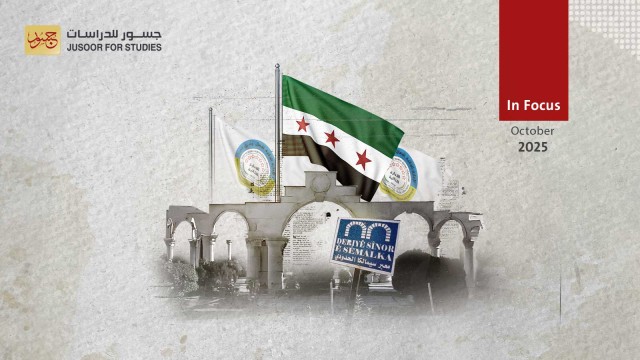Map of military influence in Syria 01-03-2018
Font Size
Jusoor for Studies Center issued the map of military influence during February 2018 that shows a constant change in the overall percentage of the military control for different forces in Syria. There is a notable increase in the overall percentage of Assad’s forces military influence at the expenses of ISIS. While the Free Syrian Army (FSA) and the Syrian Democratic Forces (SDF) kept the same percentage, the overall percentages are now as follows:
• The Assad’s forces control about 54.64 % of the Syrian lands while the overall percentage of January was 52.8%.
• The overall percentage of ISIS-held areas has been reduced from 8.0 to 7.73 and both Assad’s forces and the SDF have made military advancement in those areas.
• The SDF has kept the same overall percentage of January 2018, which is 25.53%.
• The FSA has kept the same overall percentage of January 2018, which is 11.8%.
On the other hand, the Olive Branch Operation has made a considerable military advancement during February 2018 and controlled about 0.31 % of the Syrian lands.
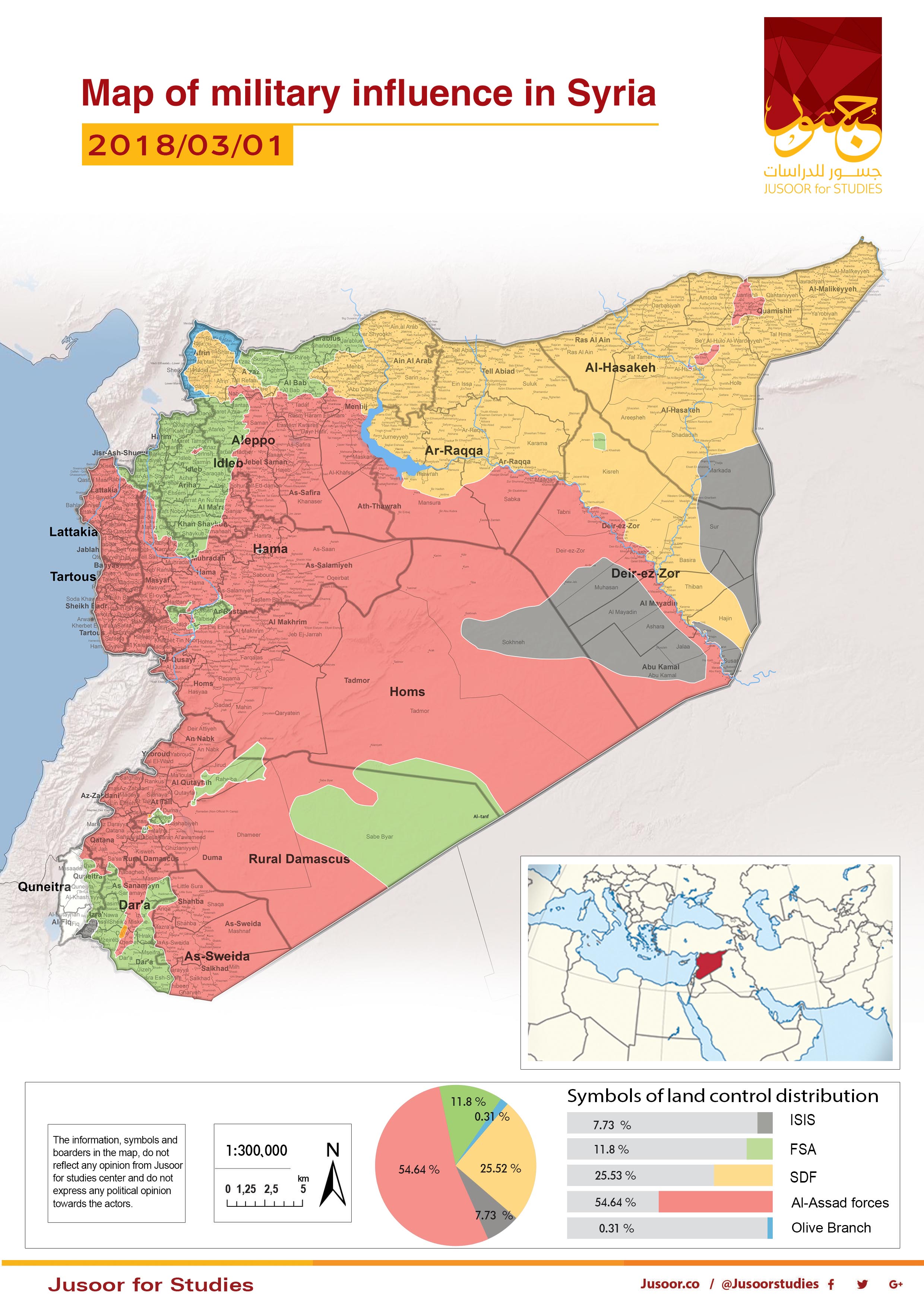
The North of Syria – Afrin Canton:
The Turkish-backed factions that participate in the Olive Branch Operation finished the first phase of the battle in Afrin enclave.
Controlling the entire border strip between Turkey and Afrin on one hand and opening a military passage between A’zaz city and Idlib Province can be considered as a significant military achievement.
Moreover, March 2018 may witness new military realities in Afrin enclave especially that the Turkish-backed factions are close to making military advancement in different axes such as Jandairis, Rajo, and Al-Shaykh Hadid during the second phase of the Olive Branch Battle. Consequently, a safe land corridor will be opened in the near future.
The Turkish-backed factions that participate in the Olive Branch Operation finished the first phase of the battle in Afrin enclave.
Controlling the entire border strip between Turkey and Afrin on one hand and opening a military passage between A’zaz city and Idlib Province can be considered as a significant military achievement.
Moreover, March 2018 may witness new military realities in Afrin enclave especially that the Turkish-backed factions are close to making military advancement in different axes such as Jandairis, Rajo, and Al-Shaykh Hadid during the second phase of the Olive Branch Battle. Consequently, a safe land corridor will be opened in the near future.
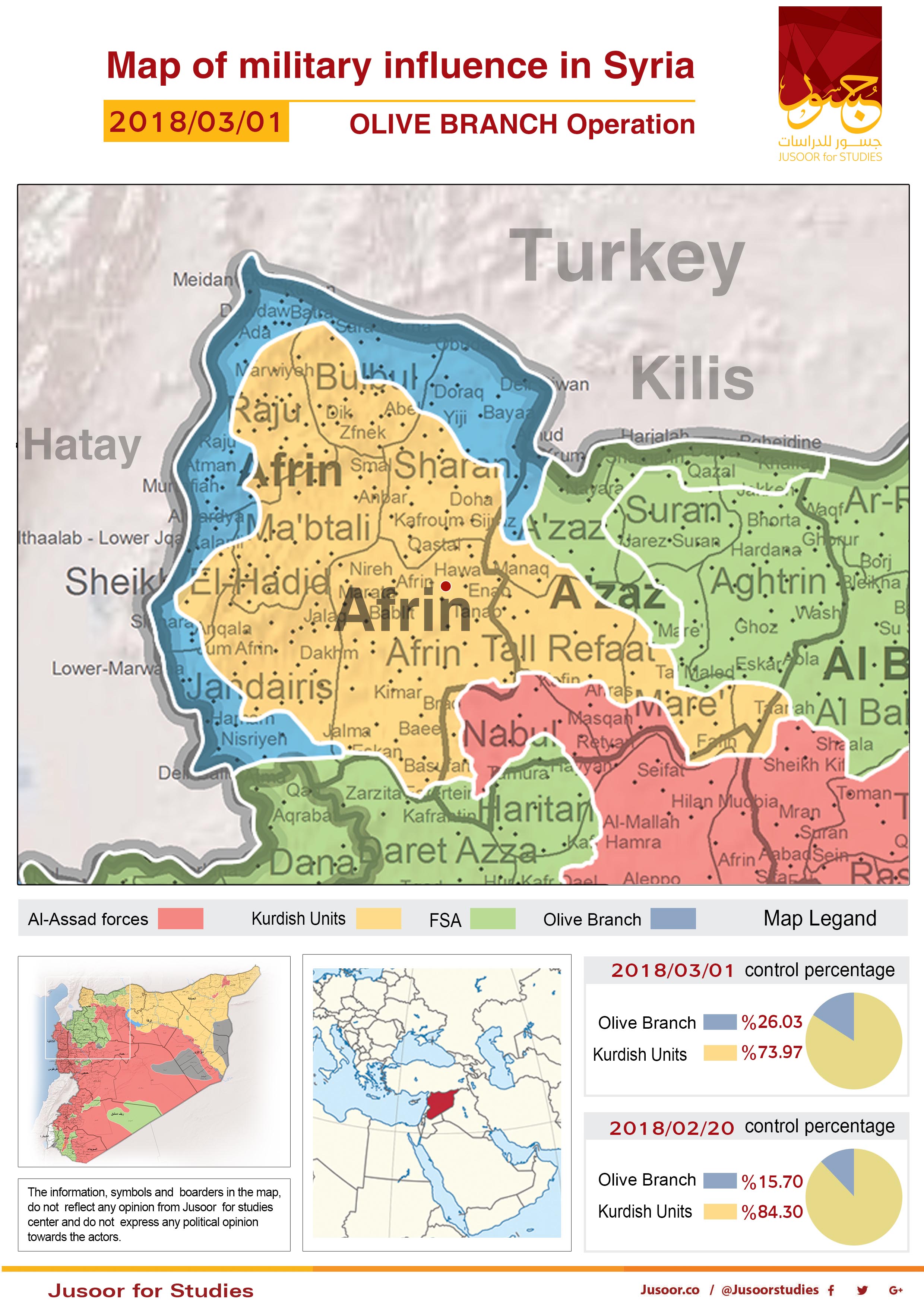
The North of Syria – Al Hijaz Railway Zone:
On Feb. 9, 2018, the Assad’s forces were able to impose military control on the entire Al Hijaz Railway Zone on the account of the FSA and ISIS. Further, the Assad’s forces tried to advance towards the west of Al Hijaz Railway zone in order to create a new military axis that can lead to Saraqeb city in Idlib eastern countryside.
After controlling the ISIS-held 1100-KM2 military enclave that located between Aleppo, Hama, and Idlib countryside by the Assad’s forces, ISIS was allowed to retreat towards the west of Abu Dali village. However, Dahr Al Ghozat military room led by different military factions was able to foil ISIS attempt to advance towards Al-Tamanah town, in addition, to forcing ISIS’ combatants to surrender in Al Khuwayn village.
February 2018 witnessed the establishment of three Turkish observation points along the zone west of Al Hijaz Railway near Al Eis village (near Al Hader village), Tell Touqan (near Saraqeb), and Tell Sarman (near Maarrat Al-Nu’man).
On Feb. 9, 2018, the Assad’s forces were able to impose military control on the entire Al Hijaz Railway Zone on the account of the FSA and ISIS. Further, the Assad’s forces tried to advance towards the west of Al Hijaz Railway zone in order to create a new military axis that can lead to Saraqeb city in Idlib eastern countryside.
After controlling the ISIS-held 1100-KM2 military enclave that located between Aleppo, Hama, and Idlib countryside by the Assad’s forces, ISIS was allowed to retreat towards the west of Abu Dali village. However, Dahr Al Ghozat military room led by different military factions was able to foil ISIS attempt to advance towards Al-Tamanah town, in addition, to forcing ISIS’ combatants to surrender in Al Khuwayn village.
February 2018 witnessed the establishment of three Turkish observation points along the zone west of Al Hijaz Railway near Al Eis village (near Al Hader village), Tell Touqan (near Saraqeb), and Tell Sarman (near Maarrat Al-Nu’man).
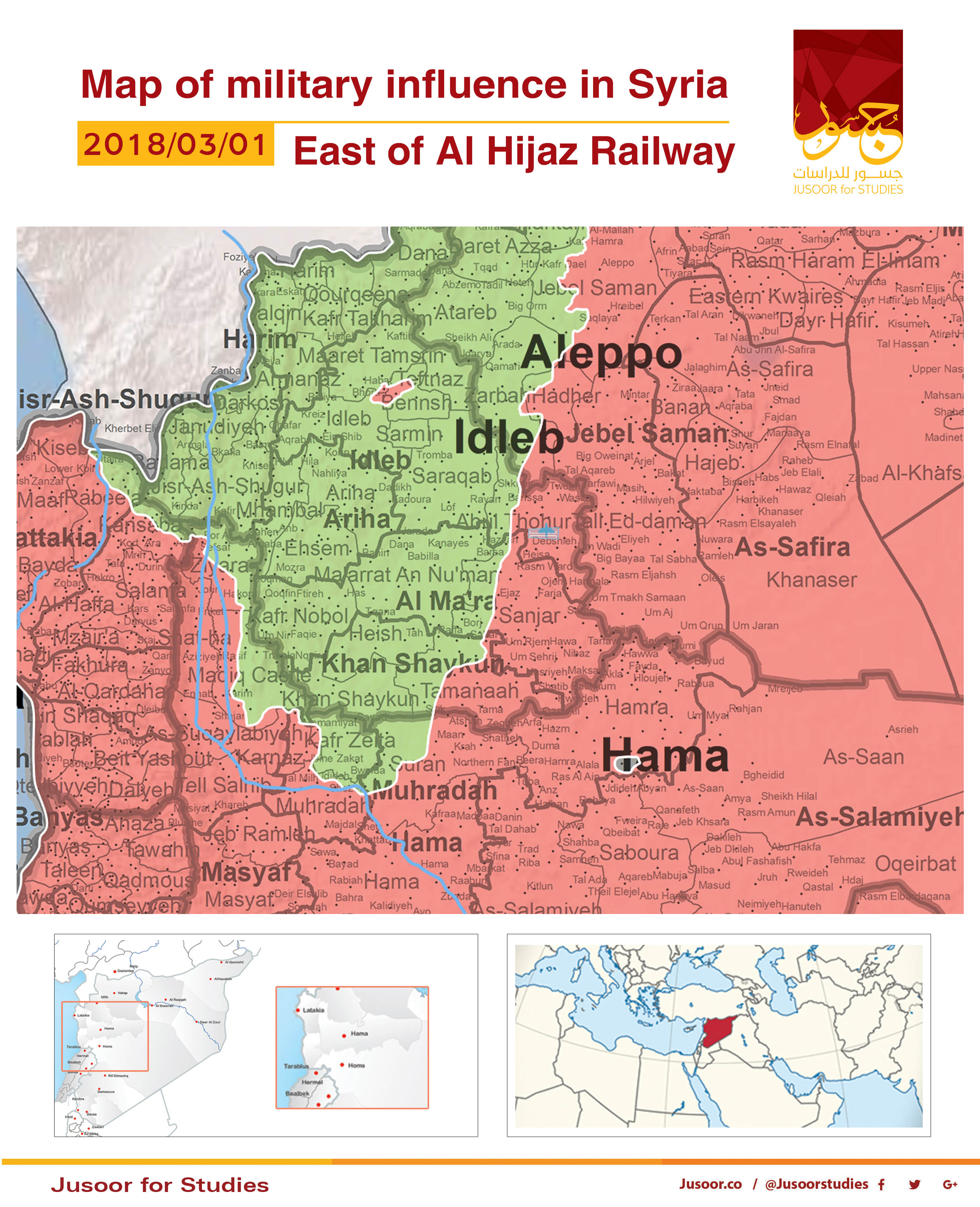
Eastern Al Ghouta:
February 2018 witnessed a military escalation by the Assad’s forces backed by Iran and Russia against Eastern Al Ghouta. During the last week, the Assad’s forces and foreign militias launched a military offensive from several axes against Easter Al Ghouta.
On Feb. 25, 2018, the Security Council adopted a unanimous resolution 2401 that demanded the cessation of the military actions for 30 days alongside lifting the siege upon the Eastern Al Ghouta and other inhabited areas, as the resolution to be put into implementation immediately. However, Al Nusra Front was excluded and the Assad’s forces backed by Russia and Iran exploited the situation for continuing the military operation in Eastern Al Ghouta.
February 2018 witnessed a military escalation by the Assad’s forces backed by Iran and Russia against Eastern Al Ghouta. During the last week, the Assad’s forces and foreign militias launched a military offensive from several axes against Easter Al Ghouta.
On Feb. 25, 2018, the Security Council adopted a unanimous resolution 2401 that demanded the cessation of the military actions for 30 days alongside lifting the siege upon the Eastern Al Ghouta and other inhabited areas, as the resolution to be put into implementation immediately. However, Al Nusra Front was excluded and the Assad’s forces backed by Russia and Iran exploited the situation for continuing the military operation in Eastern Al Ghouta.
